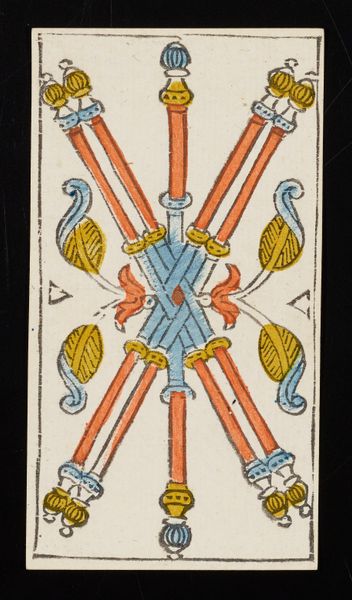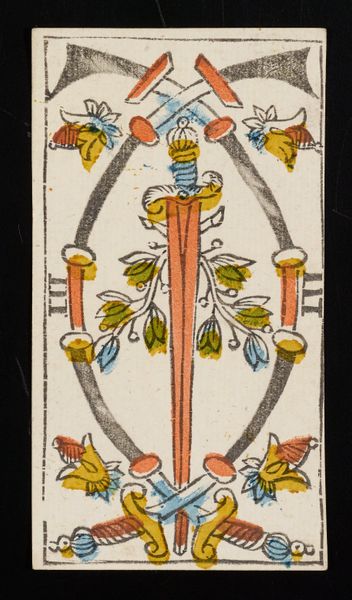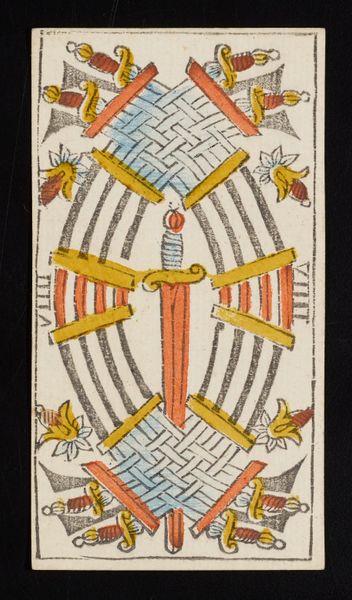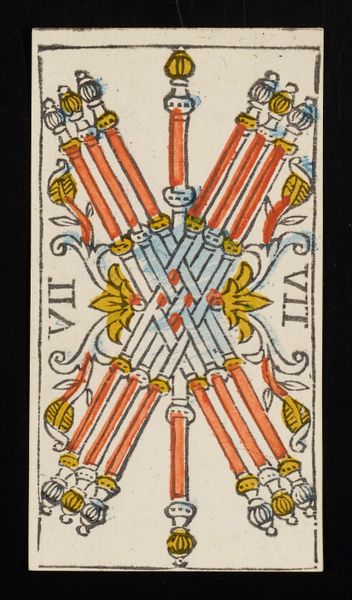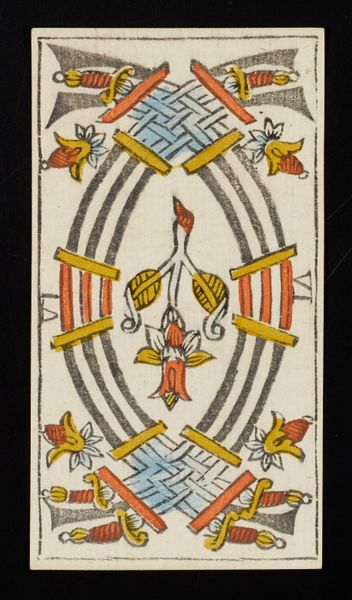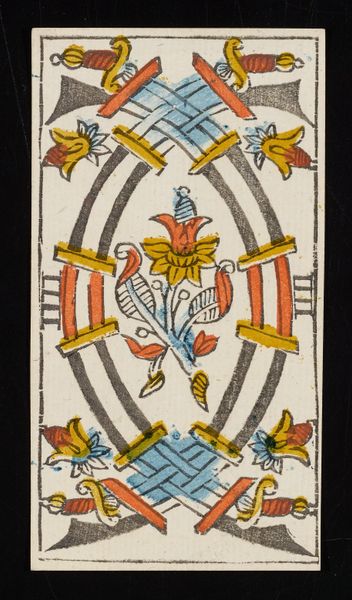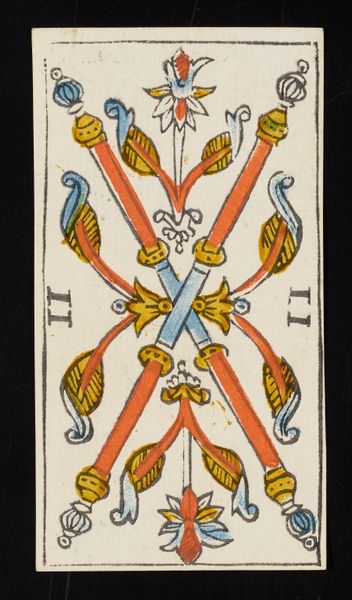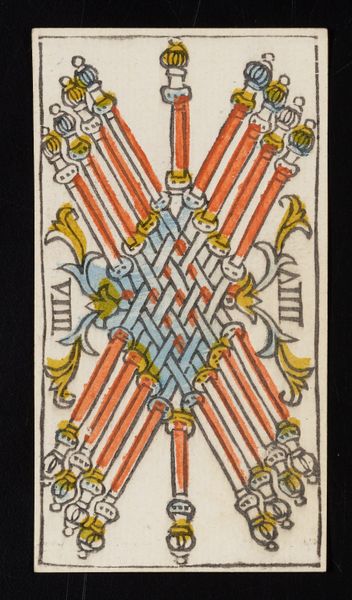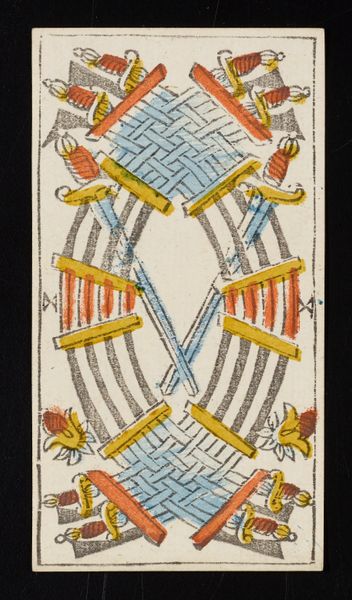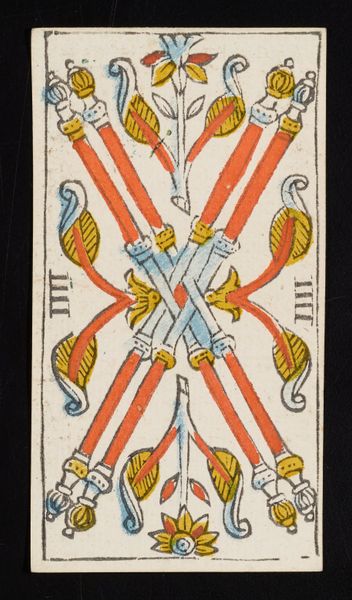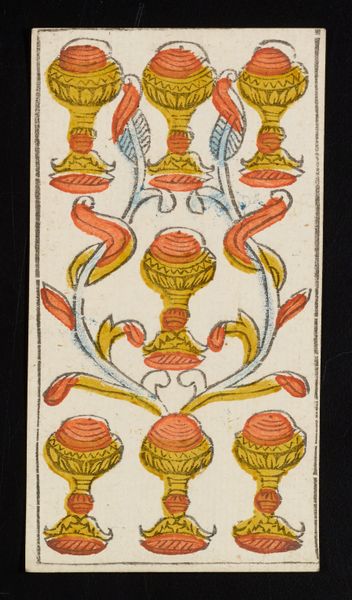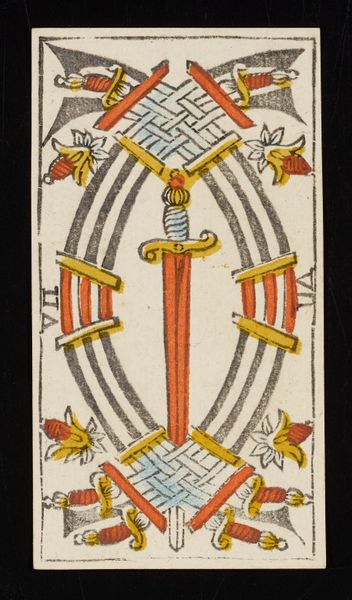
Dimensions: 4 7/16 x 2 7/16 in. (11.27 x 6.19 cm) (image, sheet)4 5/8 x 2 1/2 in. (11.75 x 6.35 cm) (sheet, each)
Copyright: Public Domain
This is Claude Burdel's "Three of Batons," a card created in the 18th century. Burdel was a Swiss card maker working during a time of significant social upheaval, including the Enlightenment and the French Revolution. The image presents three crossed batons adorned with foliage. As a tarot card, it is associated with meanings of enterprise, trade, and established strength. However, we can also see the card as a reflection of the hierarchical society of its time. Tarot cards were used across social classes, offering a symbolic language that could both reinforce and subvert existing power structures. The batons themselves, symbols of authority, are presented in a symmetrical and decorative manner, hinting at the aestheticization of power. Consider how the card might have been interpreted differently by various individuals. For the wealthy, it could represent their continued dominance, while for those marginalized, it may have evoked a longing for change or resistance against the status quo. The "Three of Batons" thus encapsulates the complexities of identity and aspiration during an era of transformation.
Comments
No comments
Be the first to comment and join the conversation on the ultimate creative platform.
